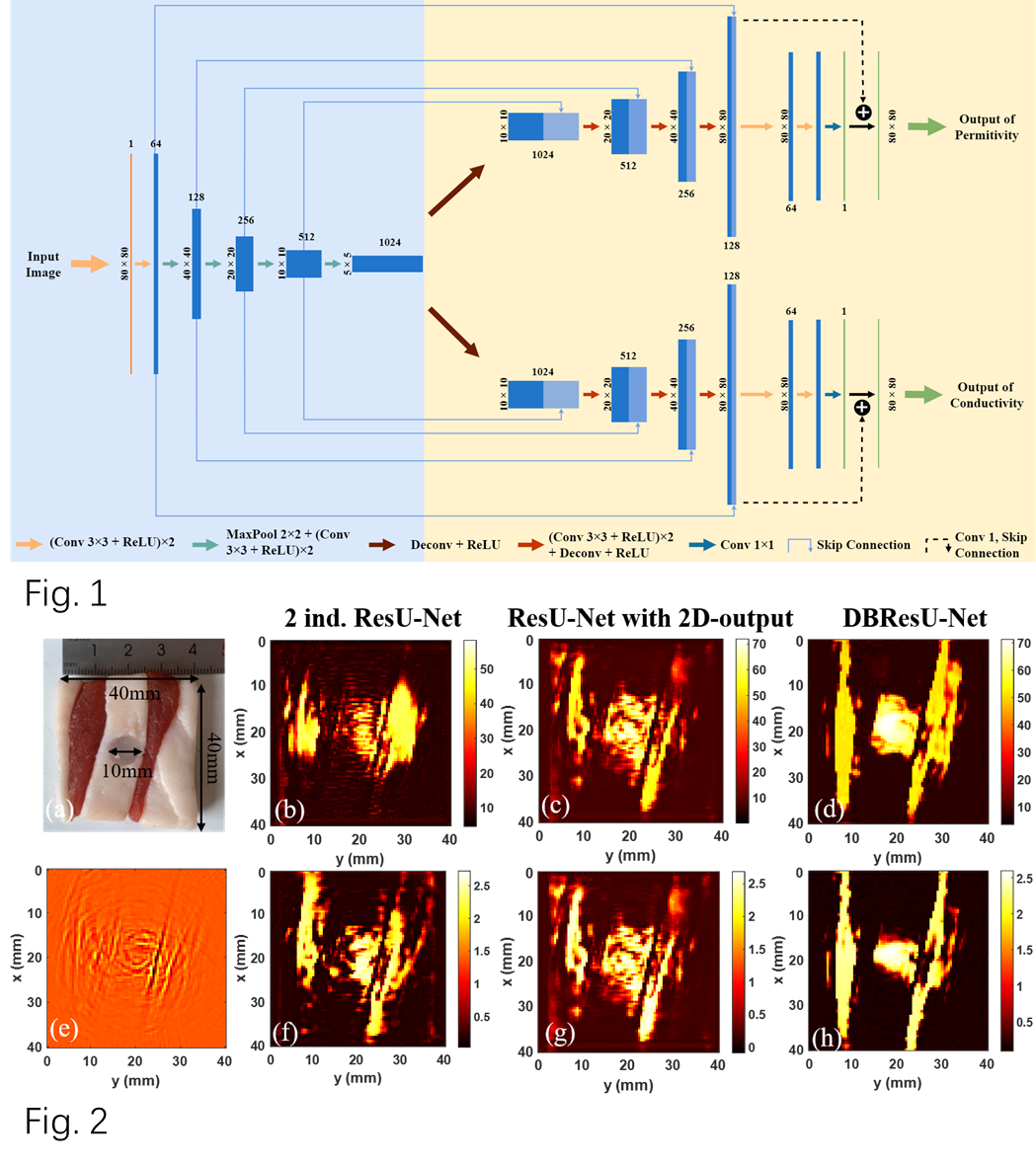Luo Zhaoxu, the undergraduate student from the SIST Assistant Professor WangXiong’s group, has published the latest research results on quantitative reconstruction of dielectric properties based on deep learning microwave induced thermoacoustic tomography. The achievement is currently published online in the international journal IEEE Transactions on Microwave Theory and Techniqueswith the title of 'Quantitative Instruction of Dielectric Properties Based on Deep Learning Enabled Microwave Induced Thermoacoustic Tomography'.
The quantitative reconstruction of the dielectric properties of the sample through electromagnetic imaging technology has developed to the point where the constitutive parameters of the sample can be accurately and quantitatively reconstructed through inverse scattering based inversion methods. However, due to the inherent ill posedness and nonlinearity of the constitutive parameters of the sample material, there may be serious interference with inverse scattering based inversion methods. The nonlinearity of constitutive parameters is caused by multiple scattering effects. When dealing with strong scatterers, the multiple scattering effects are very significant, and the nonlinearity increases significantly. Therefore, it is difficult to truly reconstruct samples with high dielectric constant and contrast, such as skin, breast tissue, muscles, and tumors. Microwave induced thermoacoustic imaging (MITAT) can be used to quantitatively reconstruct the dielectric constant and conductivity distribution in samples, which are directly related to the power absorption distribution. However, the quality and accuracy of reconstructing dielectric properties still need to be improved, especially for non-uniform biological samples. In addition, previous work required the distribution of dielectric constant as a prior knowledge, which could only restore conductivity, which is inconsistent with reality.
Prof. Wang Xiong's group used deep learning technology to solve the problem of high-quality quantitative reconstruction of dielectric properties and proposed a new neural network structure called 'DBResU-Net'. The BP algorithm was used to physically normalize the collected acoustic data to obtain preliminary TA images or distribution information as input to the network. By using two branches in the output to establish the relationship between the initial TA image and the final dielectric constant and conductivity, numerical simulation is used to effectively construct the training set. The simulation test results validate the effectiveness of this method and propose a quantitative error analysis method. This network has good generalization ability and stability when dealing with mismatched sample shapes. Experiments simulating biological samples of breasts have shown high quantitative reconstruction quality in terms of the shape and value of dielectric properties. The experimental results show that DBResU-Net still has robustness when dealing with moderate mismatches.
In the past five years, deep learning has been widely applied in various disciplines in the fields of science and engineering. This work combines deep learning technology with thermoacoustic imaging to provide another method for quantitative reconstruction of the dielectric properties of biological samples. A new network DBResU-Net composed of coarse and fine tuning models has been designed to implement DL-MITAT technology. This project is of great significance for many biomedical imaging, testing, and non-destructive testing applications.
This work was undertaken by ShanghaiTech University.The first author is SIST senior student Luo Zhaoxu, the second author isSIST Third-year Master student Li Chenzhe. SISTJunior student Liu Dantong also made contributions to this project. Prof. Wang Xiong is the corresponding author and Prof. Ma Yuexin provided valuable help to this project.
Read more at: https://ieeexplore.ieee.org/document/10058028

Figure: Fig. 1, Structure of the proposed DBResU-Net. Fig. 2, Experimental results obtained using a sample with two pieces of porcine muscle and a tumor phantom. (a) Photo of the sample. (b) - (d) The dielectric constant reconstructed via different networks. (e) The image obtained through the back-projection algorithm. (f) - (h) The conductivity reconstructed via different networks.




 沪公网安备 31011502006855号
沪公网安备 31011502006855号


